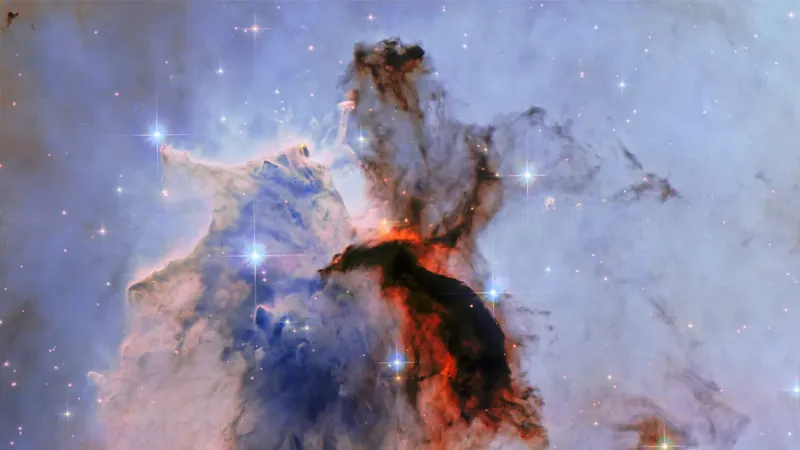
Green Comet SWAN: A Fiery Ice Eruption Sparks Excitement—Could It Be a Cryovolcano?
2025-04-15
Author: Sarah
A Spectacular Eruption from the Emerald Comet!
In a stunning astronomical event, the recently discovered green comet, known as SWAN, has erupted in a brilliant icy display as it speeds toward the inner solar system, gearing up for a close encounter with the Sun.
Is This an Icy Volcano?
The dazzling outburst, which caused the comet to brighten noticeably, has scientists speculating whether SWAN could be classified as a "cryovolcano." This means it may periodically erupt cold ice instead of lava, a phenomenon that can affect the comet's visibility to the naked eye.
Discovery and Journey of Comet SWAN
Comet C/2025 F2 (SWAN) was excitingly uncovered on April 1 by an Australian amateur astronomer poring over data from the Solar and Heliospheric Observatory, a collaboration between NASA and the European Space Agency. Currently, it is on a trajectory that will bring it within 31 million miles (50 million kilometers) of the Sun by May 1.
Astounding Images Capture the Eruption!
Astrophotographer Mike Olason from Arizona captured breathtaking images demonstrating that SWAN experienced a significant brightness surge shortly after its initial discovery. This increase in luminosity was likely driven by an eruption that expelled ice and dust into space, reflecting more sunlight back to Earth. "Between April 3 and April 6, the comet underwent a major eruption, quadrupling its brightness," Olason shared.
The Mystery of Cryovolcanic Comets
Only a handful of comets are classified as cryovolcanic. These celestial objects erupt when their icy centers are heated by the sun, causing vaporization and pressure buildup that cracks their surfaces. The icy substances, known as cryomagma, then burst forth, creating a stunning display of gas and dust.
Famous Cryovolcanic Comets and Their Eruptions
One of the most renowned examples of a cryovolcanic comet is 12P/Pons-Brooks, famously nicknamed the "devil comet" for its distinctive horn-like features during eruptions. Another notable cryovolcano is 29P/Schwassmann-Wachmann, which has consistently shown explosive behavior for decades despite remaining far from the Sun.
What’s Next for Comet SWAN?
While the recent outburst has raised questions about the nature of SWAN's eruption—whether it was a cryovolcanic event or simply an icy pocket being vaporized—more observations are essential to unravel its mysteries. This eruption also introduces uncertainty regarding its visibility; although currently observable with telescopes or binoculars, experts are now cautious about its potential to become visible to the naked eye in the coming weeks.
Stay Tuned for More Updates!
As astronomers continue their observations, the fate of Comet SWAN remains uncertain but exciting. The growing interest in this emerald celestial wonder promises to keep all of us stargazers on our toes!



 Brasil (PT)
Brasil (PT)
 Canada (EN)
Canada (EN)
 Chile (ES)
Chile (ES)
 Česko (CS)
Česko (CS)
 대한민국 (KO)
대한민국 (KO)
 España (ES)
España (ES)
 France (FR)
France (FR)
 Hong Kong (EN)
Hong Kong (EN)
 Italia (IT)
Italia (IT)
 日本 (JA)
日本 (JA)
 Magyarország (HU)
Magyarország (HU)
 Norge (NO)
Norge (NO)
 Polska (PL)
Polska (PL)
 Schweiz (DE)
Schweiz (DE)
 Singapore (EN)
Singapore (EN)
 Sverige (SV)
Sverige (SV)
 Suomi (FI)
Suomi (FI)
 Türkiye (TR)
Türkiye (TR)
 الإمارات العربية المتحدة (AR)
الإمارات العربية المتحدة (AR)